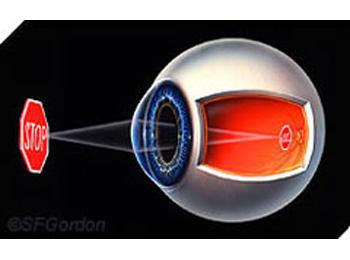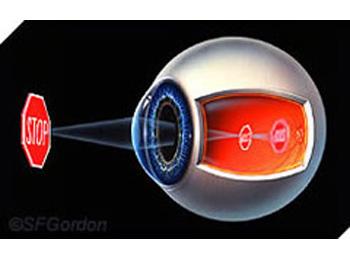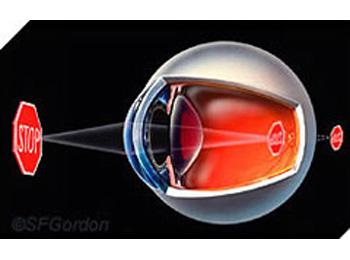How Does the Eye See?

The eye is like a camera that has two focusing lenses. One of these lenses is the crystalline lens inside the eye. The other lens is the cornea, which is positioned on the front of the eye like a watch crystal and provides 2/3 of the eye's focusing power.
What Are Refractive Errors of the Eye?
When light entering the eye is focused by both the cornea and the retina, the eye will see 20/20 or better without optical aids. However, if light is not focused correctly, vision is less than 20/20, and images may appear blurry. This is called a "refractive error." The human eye can have one or a combination of refractive errors.

Myopia
Myopia, or nearsightedness, occurs when the eye has too much focusing power. As a result, objects at a distance are blurry, whereas close objects can be clearly seen (unless astigmatism is present). Typically, the myopic eye is slightly longer or has a steeper cornea compared to the normal eye.

Astigmatism
Astigmatism is a condition in which light rays in different orientations are brought to different points of focus. A useful analogy is the comparison of a basketball to a football. The surface of a basketball has equal curvature in all directions, whereas a football is flatter in one orientation and steeper in the other. The surface of the football represents the situation that is present when the eye has astigmatism.

Presbyopia
Presbyopia is a natural condition that typically becomes noticeable around age 45. In children and young adults, the lens inside the eye can easily focus on distant and near objects. As we get older, the lens inside of the eye loses its ability to focus in and out. As this occurs, individuals find that they need to hold reading material further away. Ultimately, reading glasses are typically needed by the mid-40s.








